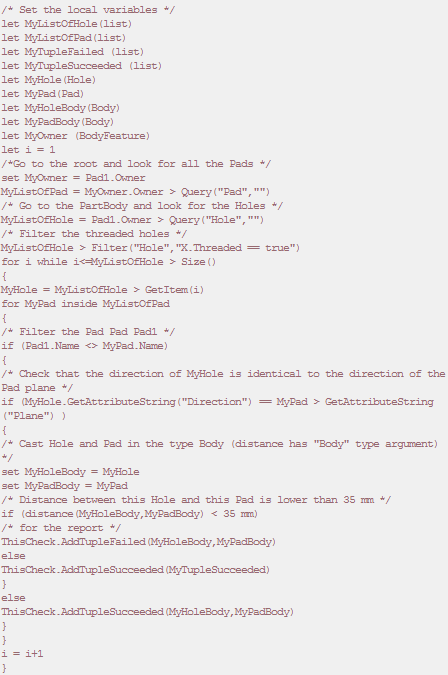Click  and select Knowledgeware > Rules > Knowledge Expert.
and select Knowledgeware > Rules > Knowledge Expert.
Click Expert Check
 .
.
The Expert Check Editor dialog box is displayed.
In the Language scrolling list, select the
Knowledge Advanced Language . Click OK.
Double-click the For All field
 ,
and select the feature type that you want to apply to the expert
rule. The following syntax must be applied: Pad1:Pad.
,
and select the feature type that you want to apply to the expert
rule. The following syntax must be applied: Pad1:Pad.
Copy/Paste the code below into the edition box and
click OK when done:

Click Solve
 .
.
The check icon turns to red indicating that the check failed.
Right-click the rule base in the specification tree,
and select RuleBase object > Report..., or click
Report
 .
.
The check icon turns to red indicating that the check failed. Select
the directory and click OK. The report is displayed.
Note:
You can use local variables in your
checks/rules using the
let
keyword.You can use two new methods to fill
in the list of succeeded and failed objects for the
report:
AddTupleFailed and
AddTupleSucceeded. You can also use the
List function.You can now use the if...then.. else, for, and
while constructs in your check/rule bodies. For more
information see, Knowledge Expert Language